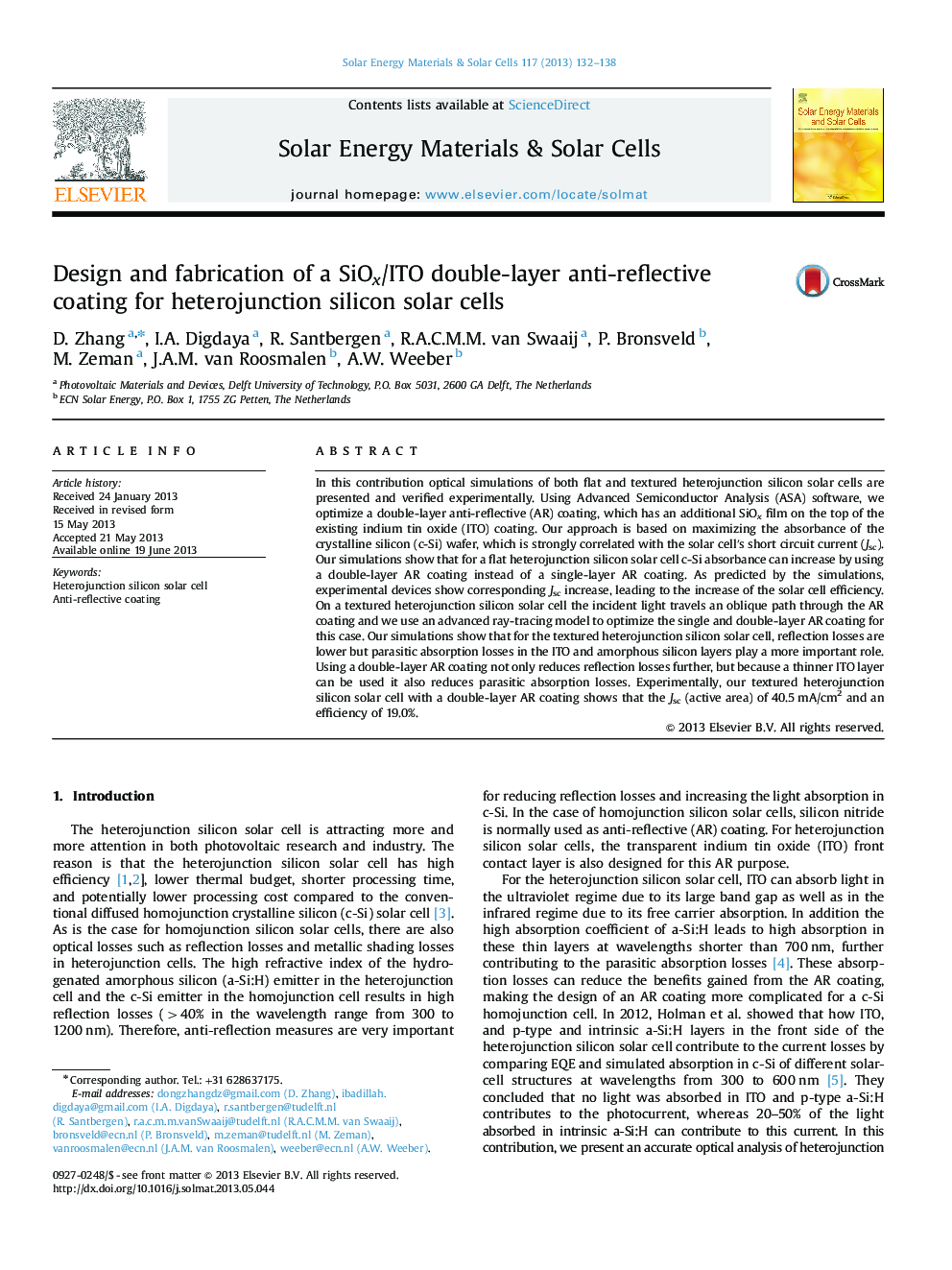| Article ID | Journal | Published Year | Pages | File Type |
|---|---|---|---|---|
| 6536147 | Solar Energy Materials and Solar Cells | 2013 | 7 Pages |
Abstract
In this contribution optical simulations of both flat and textured heterojunction silicon solar cells are presented and verified experimentally. Using Advanced Semiconductor Analysis (ASA) software, we optimize a double-layer anti-reflective (AR) coating, which has an additional SiOx film on the top of the existing indium tin oxide (ITO) coating. Our approach is based on maximizing the absorbance of the crystalline silicon (c-Si) wafer, which is strongly correlated with the solar cellâ²s short circuit current (Jsc). Our simulations show that for a flat heterojunction silicon solar cell c-Si absorbance can increase by using a double-layer AR coating instead of a single-layer AR coating. As predicted by the simulations, experimental devices show corresponding Jsc increase, leading to the increase of the solar cell efficiency. On a textured heterojunction silicon solar cell the incident light travels an oblique path through the AR coating and we use an advanced ray-tracing model to optimize the single and double-layer AR coating for this case. Our simulations show that for the textured heterojunction silicon solar cell, reflection losses are lower but parasitic absorption losses in the ITO and amorphous silicon layers play a more important role. Using a double-layer AR coating not only reduces reflection losses further, but because a thinner ITO layer can be used it also reduces parasitic absorption losses. Experimentally, our textured heterojunction silicon solar cell with a double-layer AR coating shows that the Jsc (active area) of 40.5Â mA/cm2 and an efficiency of 19.0%.
Keywords
Related Topics
Physical Sciences and Engineering
Chemical Engineering
Catalysis
Authors
D. Zhang, I.A. Digdaya, R. Santbergen, R.A.C.M.M. van Swaaij, P. Bronsveld, M. Zeman, J.A.M. van Roosmalen, A.W. Weeber,
